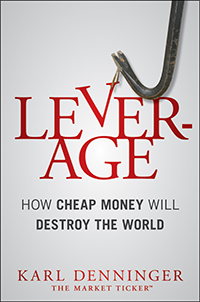The Consumer Price Index for All Urban Consumers (CPI-U) increased 0.2 percent on a seasonally adjusted basis in October, the same increase as in each of the previous 3 months, the U.S. Bureau of Labor Statistics reported today. Over the last 12 months, the all items index increased 2.6 percent before seasonal adjustment.
The index for shelter rose 0.4 percent in October, accounting for over half of the monthly all items increase. The food index also increased over the month, rising 0.2 percent as the food at home index increased 0.1 percent and the food away from home index rose 0.2 percent. The energy index was unchanged over the month, after declining 1.9 percent in September.
The index for all items less food and energy rose 0.3 percent in October, as it did in August and September. Indexes that increased in October include shelter, used cars and trucks, airline fares, medical care, and recreation. The indexes for apparel, communication, and household furnishings and operations were among those that decreased over the month.
The all items index rose 2.6 percent for the 12 months ending October, after rising 2.4 percent over the 12 months ending September. The all items less food and energy index rose 3.3 percent over the last 12 months. The energy index decreased 4.9 percent for the 12 months ending October. The food index increased 2.1 percent over the last year.
That bolded and particularly the bolded and underlined text is the important one, and is why I included the text of that entire section.
But for the energy index coming down core would be smoking hot, likely close to 4% or double the claimed "target" and within one percent of wage increases which in turn means that any idea that consumers can "earn" their way out of the inflation hole is fantasy-land nonsense.
Yet this premise is absolutely key to the idea that we can "keep" the sort of pricing that is in the marketplace (and thus the sort of stock and other asset prices) that are currently present. On the number release the market decided 20 handles on the /ES futures must be added.
A caution: All the energy decrease was in gasoline and fuel oil (diesel, along with home heating use.) Both natural gas and electricity were up on a 12 month basis, the latter more than the former, which strongly implies that policy decisions are largely responsible. Electricity prices going up 4.5% on the year are a serious inflation risk as electrical power goes into literally everything -- its not just your light bill, it is also the light bill of every store, every warehouse, distribution terminal and manufacturing facility. This is precisely the sort of "sticky" inflation influence that cannot be absorbed.
Oh, and car insurance? Up 14% annualized. You don't need to buy that (if you own a car), right?
CNBC is talking about inflation being "sticky": Yeah, that would be due to electricity costs among other mandatory spending such as health care and shelter.
PS: The PPI is now out as well and, well.... it is confirming this view with almost-exactly the lead time that I expected and worse, well, here's the quote:
Over 80 percent of the broad-based increase in October can be attributed to a 9.9-percent jump in the index for unprocessed energy materials.


